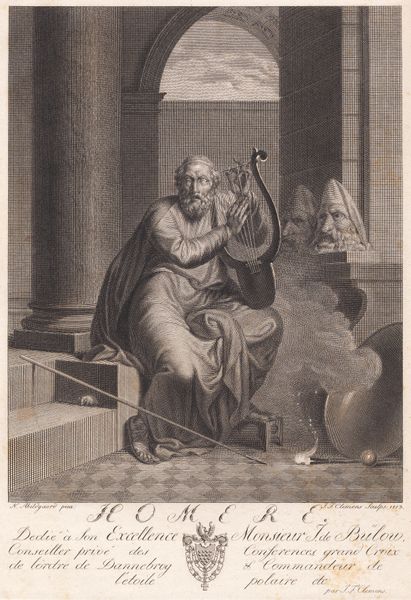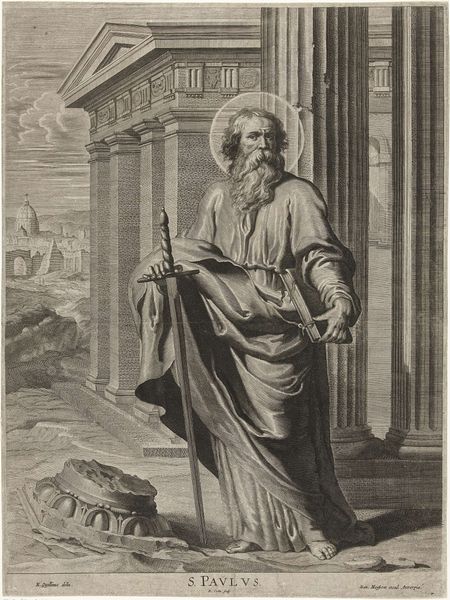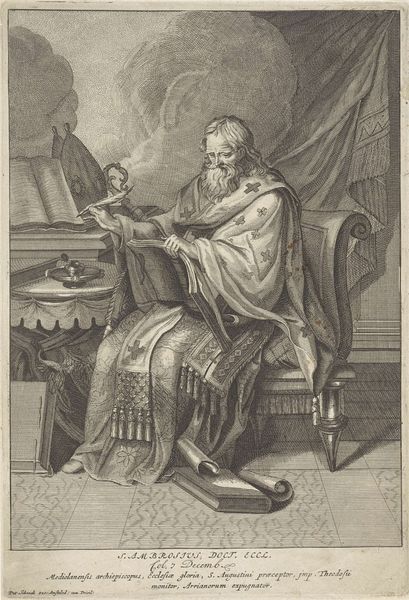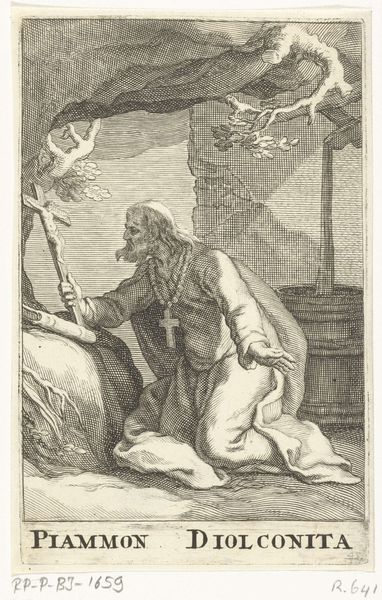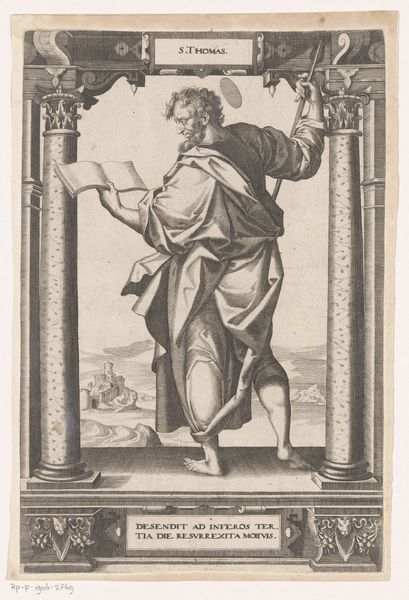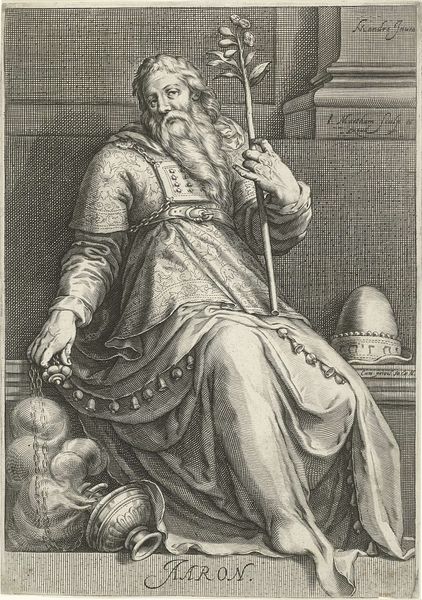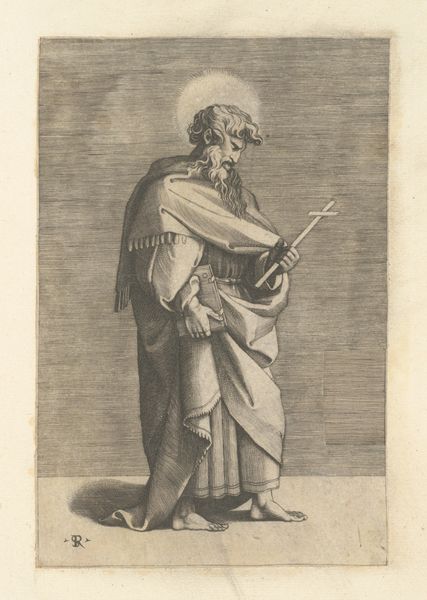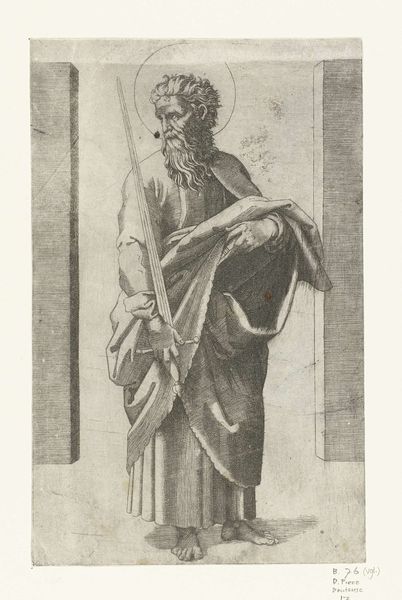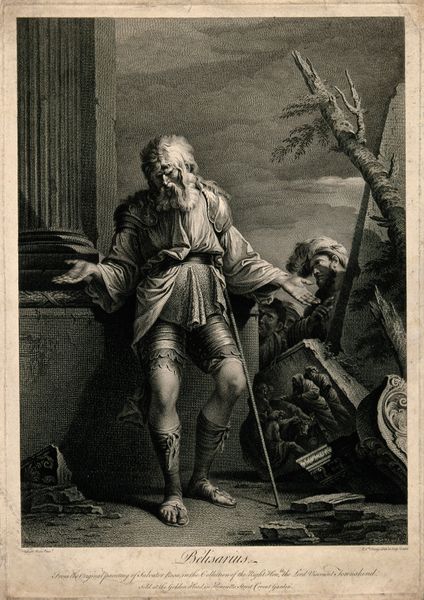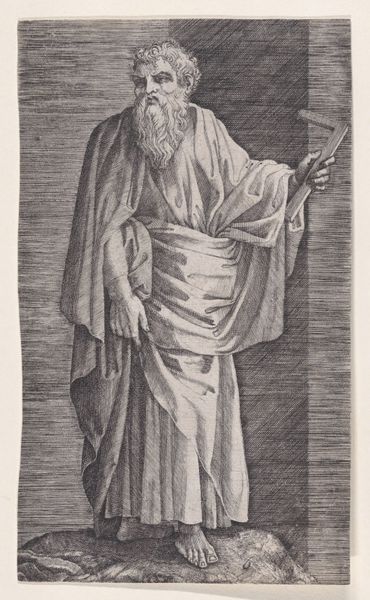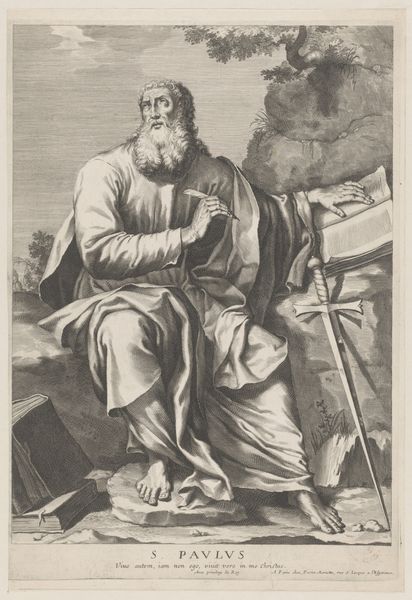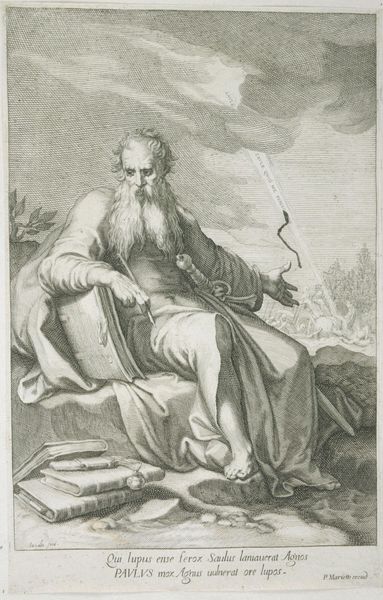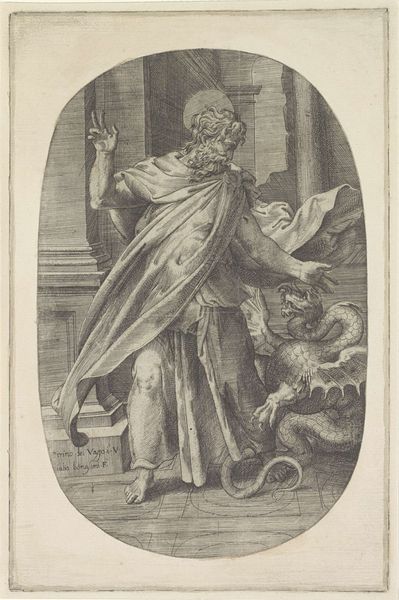
print, etching
#
portrait
#
neoclacissism
# print
#
etching
#
old engraving style
#
portrait reference
#
portrait drawing
#
history-painting
Dimensions: 306 mm (height) x 229 mm (width) (bladmaal), 245 mm (height) x 193 mm (width) (billedmaal)
J.F. Clemens created this print of Homer sometime before 1831. The image is made by way of engraving, a skilled intaglio process. A metal plate, likely copper, would have been painstakingly incised with lines to hold ink. Consider the labor involved. The engraver would have used specialized tools to create the intricate network of lines that form the image. Each stroke of the burin requires precision and control. Light and shadow are built up through the density and depth of the lines, demonstrating the engraver's mastery of technique. The print medium itself speaks to a specific moment in the history of image production, before photography. Prints like this one played a crucial role in disseminating knowledge and culture. They allowed images and ideas to be reproduced and shared, and are a direct reflection of the social and cultural significance associated with skilled handcraft.
Comments
No comments
Be the first to comment and join the conversation on the ultimate creative platform.
